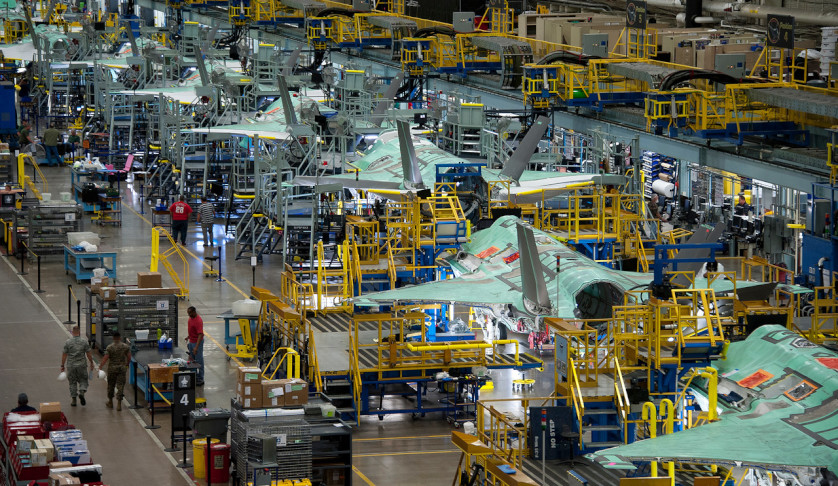Australia’s defence industry has gone from strength to strength in a short period of time – however, global competition and world-leading capabilities requires a shift in gear to support continued growth and competitiveness for Australian manufacturers, but what does this look like?
A core component of the Australian government's $200 billion investment, recapitalisation and modernisation of the nation's defence capability is the focus on developing a truly sovereign, sustainable and competitive domestic defence industry capability.
The introduction of the Defence Industrial Capability Plan in 2018 outlines the government's long-term vision to "build and develop a robust, resilient and internationally competitive Australian defence industry base that is better able to help meet defence capability requirements" in recognition of the rapidly evolving geo-strategic environment and Australia's changing role in the region.
The plan acknowledges that as Australia builds its defence capability, we must also grow our defence industrial capability. By 2028, Australia will require a larger, more capable and prepared defence industry that has the resident skills, expertise, technology, intellectual property and infrastructure to:
- Enable the conduct of ADF operations today;
- Support the acquisition, operation and sustainment of future defence capability; and
- Provide the national support base for Defence to meet current needs and to surge if Australia’s strategic circumstances require it.
Australia's industry participation as a critical part of the global supply chain for major global defence projects like the US$1 trillion F-35 Joint Strike Fighter program, combined with now global programs like the Boeing E-7A Wedgetail AEWC program, Boxer combat reconnaissance vehicle and the BAE Systems Type 26 Global Combat Ship (to be Hunter Class in Australian service), are potent examples of Australia's industrial capability.
However, as with the changing currents of the Indo-Pacific's geo-political and strategic order, Australia's defence industry capabilities require a renewed policy agenda to support the next-stage of defence industry capability development. But what does this look like?
Global collaboration and the supply chain
Australia's participation as a critical component in the global supply chain for key defence programs has long been recognised, with Australia's defence SMEs leading the charge and punching wildly above their comparative weight, including highly successful examples like Quickstep Holdings, Marand Precision Engineering, Varley Group, TAE Aerospace and Bisalloy Steel each showing Australia can be a true global competitor.
While these capabilities are impressive, growth has to be a critical focus – particularly as other global competitors' market shares in projects like the F-35 program continue to evolve and in some cases decline. Australian industry requires significant support from organisations like Team Defence Australia and the Australian Defence Export Office (ADEO), which have established themselves as powerful allies for developing Australia's defence industry capability.
As these organisations continue to spruik the capabilities of Australia's defence industry capability in Europe, Asia, the Middle East and North America, the question remains – what more can these organisations do to support the development and market exposure of Australia's rapidly growing defence SMEs?
Reciprocal allied manufacturing?
The growing complexity and commonality of major defence acquisition programs between a number of allied nations – particularly five eye nations like the US, Australia, Canada and the UK – provides avenues for diplomatic and economic partnerships to support increased industry capability, strategic dispersal and interoperability.
In particular, the closure of both Japan and Italy's F-35 facilities combined with the acquisition of the Type 26 Global Combat Ship by the British, Canadian and Australian Navies, and the potential acquisition of a variant of the Australian Hobart Class variant by the US Navy as part of the FFG[X] program, provide avenues for Australia and its core allies to spread the cost and industrial burden of these increasingly complex programs.
Additionally, by diversifying the build program, leveraging the unique industrial strengths and capabilities of each nation due to an increased economy of scale should serve to decrease overall unit acquisition price, potentially increasing the avenues for additional platform acquisition at a time when each of the respective nations will be required to do more in order to maintain the international order.
Tax exemptions and creating a National Strategic Industry Act?
Supporting the development of Australia's defence industry also requires the legislative power of government to counter-balance industry development policies of allied, yet still competitor nations like South Korea – which leverages the industrial development policies of export oriented industrialisation (EOI) to develop its economy into a major economic and modern, advanced manufacturing powerhouse.
This is done through a range of government-driven incentives for industry, including corporate tax incentives, employment incentives and payroll tax incentives. Australia's now firm commitment to developing a robust domestic defence capability requires innovative and adaptive thinking in order to expand the capabilities and competitiveness of the domestic industry.
Elements of Australia's innovation and science agenda combined with grant allocation and targeted, contractual tax incentives (signed between the Commonwealth and the company as a memorandum of understanding) linked to a combination of long-term, local job creation, foreign contract success, local industry content, and research and development programs, are critical components that can be used to empower and enhance the overall competitiveness.
Finally, as part of developing a broader National Security Strategy, the introduction of a National Strategic Industry Act that designates and through the machinery of public policy supports and sustains the development and competitiveness of industries deemed 'critical to national security' to avoid the failures of the past, which has resulted in costly project delays, price increases and capability gaps.
Developing and implementing a cohesive, innovative and long-term vision for Australia's sovereign defence industry capability can also serve as the basis for developing and in some cases redeveloping a robust, advanced manufacturing economy taking advantage of Australia's unrivalled resource wealth – supporting the broader national security and interests in the Indo-Pacific.
Let us know your thoughts and ideas supporting the next stages of development for Australia's sovereign defence capability in the comments section below, or get in touch with



